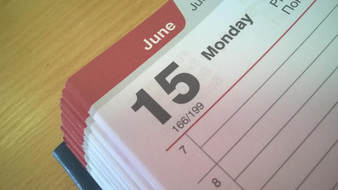|
No, not that kind of date. Sorry if that’s what brought you here. Here’s what this is really about. Am I posting this article on 28 August, August 28, 28th August 2018, 28/8/2018, 2018-08-28, or … ? Dates can be written in a dizzying number of ways, and this often gives us editors and proofreaders a fair bit of work to do. As with so many other things in language editing, it isn’t all about correctness. We need to make sure things are clear and consistent, and to consider the client’s or author’s preferences. But we should think about their readers as well, and sometimes this means questioning those preferences. So, where to begin? Day or month first? This is, perhaps, the one aspect of date writing that divides us the most. And when the month is written as a number (we’ll come back to that later), it can easily confuse or mislead the poor reader. In the US, the month invariably comes first, with the notable exception of ‘the Fourth of July’ – well, it does sound grander than plain old ‘July (the) Fourth’. Many Canadians follow this rule as well, though many others put the day first. In most of the rest of the world, the day usually appears before the month – though this does vary in countries such as the UK, at least when the month is represented by its name rather than a number. Some major newspapers, such as The Times, routinely put the month first – and this is a long-standing tradition, not a recently adopted Americanism. But which is better? The day-month format seems more logical when the year is included at the end: it means we progress from the smallest unit to the largest. However, month-day has the advantage of starting with what is usually the more important part, with the day being a more minor detail. If we’re told in February that ‘the road will be closed until July 12’, the main point is that it will be closed until July – the ‘12’ is a secondary detail – so it makes sense if we find out about the month first. It’s also consistent with how we write the time of day: the larger unit (hours) comes before the smaller one (minutes). These are marginal arguments, though, and it’s more important to use whichever format the readers will expect – if you know what that is. Cardinal or ordinal? Next up: do we write ‘30 September’ (cardinal) or ‘30th September’ (ordinal)? (The choice to use the day-month format makes no difference to the discussion here.) Although there is a long tradition of writing the ordinal form – and it matches what we usually say out loud (we’ll come back to that later as well) – it’s gradually falling out of favour. The Oxford Style Guide and The Chicago Manual of Style, the two heavyweights of UK and US editorial guidance, both recommend the cardinal format. One of the modern trends in editorial practice is to minimise the clutter on a page or screen, making it neat and free of needless distractions. We can easily understand dates without the ‘st’, ‘nd’, ‘rd’ or ‘th’ suffix, so it’s unnecessary, and so out it goes. But which was the year? (Deep apologies if this has given you a Simon Bates flashback. If that means nothing to you, consider yourself lucky.) As well as the day and month, in whichever order they appear, should we write the year? This is where pragmatism and common sense can help. If the year is obvious from the context, and there’s no compelling reason to mention it, let’s not. Some months ago I was copy-editing a book manuscript that related a series of events like this: … in April 1927 … On 5 April 1927, … On 26 May 1927, … On 3 June, … On 27 June, … On 9 July, … On 18 July, … At 2pm on 20 July [that’s better], … Over the next weekend (13–14 August 1927) [oh ...], … On 23 August, … On 26 August, … at 3pm on 29 August 1927 … On 30 August 1927, … On 2 September, … On 10 September … On 16 November 1927, … Reading this was hard work. From the first time 1927 was mentioned, it was clear that all of these things happened that year – so why keep repeating it? (We can also make this kind of narrative less mind-numbing by using other ways of saying when something happened – ‘a week later’, ‘the following Saturday’, ‘towards the end of the month’ and so on. The reader won’t always care about the exact date.) Finally, if you’re writing the month first, using a cardinal day number and mentioning the year, it makes sense to put a comma after the day: ‘June 1, 1994’. Otherwise, the two numbers would look awkward together: ‘June 1 1994’. Minimal months? Month names are often abbreviated to three or four letters: ‘Jan’, ‘Sept’, ‘Nov’ and so on. This makes sense in a table, or on a graph or chart, where space is at a premium: the full names of some months would be too cumbersome. In normal sentences, though, this style is best avoided: it can make the reader stumble, and can make you look amateurish or lazy. Digits for dates Another way of keeping things brief is by using a number for the month, as well as for the day and (if it’s included) the year. But this is where a mix-up between the day-month and month-day formats can really cause problems. If the day number is above 12, we’re fine: there’s no ambiguity in ‘15/08/2009’. Otherwise, though, with something like ‘04/06/2019’, it’s important that the reader knows what’s what. The year is often shortened to two digits – ‘30/06/18’, for example. But perhaps this idea lost some credibility when the Year 2000 computer bug became big news in the (19)90s, thanks to computer systems that used only two digits for the year. This made them think that, for example, 2005 was earlier than 1995, because 05 is less than 95. (And, by the way, as someone who was working in IT back then, I can tell you that the Y2K bug was real, and pretty serious, whatever the sceptics might say. It’s true that nothing went horribly wrong – but that’s because people fixed it. Thank you.) Also, when the year number ends in the 01 to 31 range, it doesn’t instantly look like a year – it could be a day or, if it’s no higher than 12, a month. Even if you know which format is being used, something like ‘05/02/08’ has a vague look to it. Come 2032, though, the two-digit year just might be in for a revival. Speaking of computers, the use of numbers has also brought us the YYYY-MM-DD format (with or without the hyphens). This is useful in file names, if you want the files to appear in chronological order; and within files – for example, in a column in a spreadsheet. It isn’t a good format for general use, though, as it doesn’t make for smooth reading. Nobody ever says, ‘She was born on nineteen eighty-five eleven twenty-six.’ Another thing that varies in numeric dates is the punctuation between the numbers: usually a slash in the UK and US, but a full stop in mainland Europe. Hyphens are commonly used as well. Leaving out the punctuation altogether is fine in computer files, but not a good idea elsewhere. There’s also the option of leaving out leading zeroes in the day and month (but not the year): for example, we could write ‘1/9/2018’ rather than ‘01/09/2018’. Say what you see, see what you say? Here’s something unusual about dates: the way we write them doesn’t usually correspond to how we say them out loud, at least in the UK. Although we might write ’30 August’ – and find it clear enough when reading it – we won’t say ‘thirty August’. Instead, we’re likely to say ‘the thirtieth of August’. So why don’t we write it that way, or as ‘the 30th of August’? Whatever the reason for this mismatch, it’s become so well established that we might as well go along with it. People do sometimes write things like ‘the 4th of April’, but – even though it would sound normal – somehow it looks verbose and slightly pompous. Although this convention breaks the basic laws of readability, somehow it doesn’t seem to cause a problem. So, I don’t recommend writing dates that way, unless you’re quoting someone’s spoken words or writing fictional dialogue. In that case, it would be jarring for the reader to come across something like: ‘She said, “He’s coming home on 7 June.”’ This isn’t quite the case in the US, though. There, a date might well be written as ‘October 5th’ and spoken as ‘October fifth’. The ‘of’ in ‘the fifth of October’ has no purpose when the month comes first; and, although we Brits would still say ‘the’ before the day regardless of the sequence, Americans often don’t. ‘The Fourth of July’, is an exception, again, though that occasion also might be called ‘July Fourth’. Making choices So, how should you choose which format to use? As with many other aspects of writing, it’s important to bear in mind the target readers and their expectations, the nature of the material, and the context. Cardinal day numbers (‘1’ rather than ‘1st’ etc.) tend to work better in all but the most formal, old-fashioned types of writing. All-numeric dates and abbreviated month names are useful in tables and some other structures, but would make for awkward reading in normal sentences. Consistency matters as well. If you publish any kind of written material as part of the running of your business, it’s valuable to give it a consistent ‘look and feel’. This will help your customers to read your content smoothly and will reinforce your brand identity. The way you present dates is a part of this – perhaps a fairly small part, but one worth paying attention to. Does your business have a style guide, to help ensure consistency and good sense in the way things such as dates are written? If not, I can help you to develop one. If you do already have one, I can review it and recommend enhancements. You can find out about this service here.
0 Comments
Your comment will be posted after it is approved.
Leave a Reply. |
Thoughts on Words
An editorial blog. Posts by Graham Hughes. Archives
July 2024
Categories |




